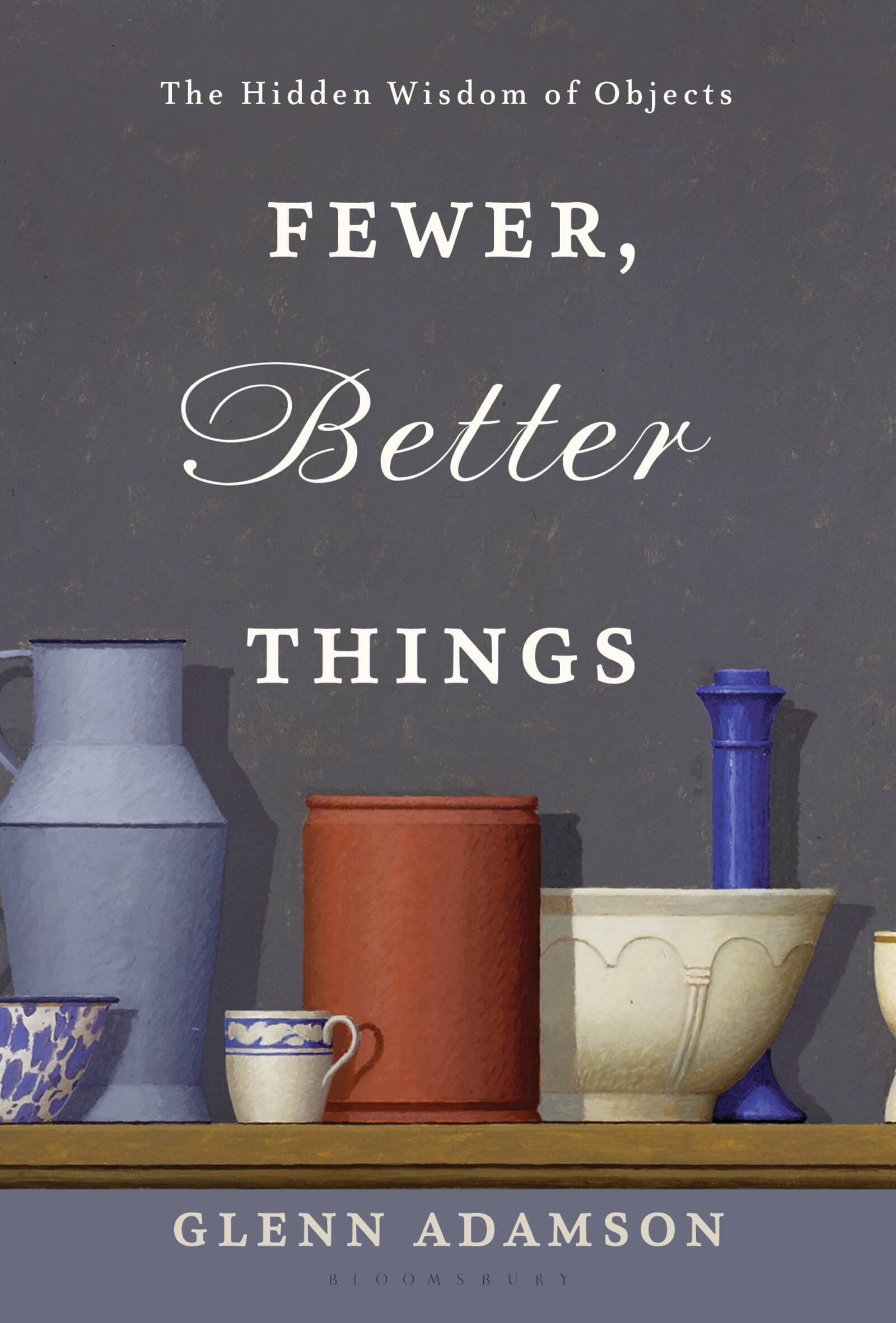Book Review / Fewer, Better Things
Does the well-designed object have a role in our digital age?
Glenn Adamson
Bloomsbury, 2018
GLENN ADAMSON IS a fine scholar with a keen intellect and a superb command of language. But he can be devious. His newest book Fewer, Better Things: The Hidden Wisdom of Objects, presents itself as light reading — with a catchy title and a conversational tone, it opens with a recollection of his favourite teddy-bears. But after drawing the reader in with personal reminiscences, he transitions to his real, and weighty subject: material intelligence, which he describes as “a deep understanding of the material world around us, an ability to read that material environment, and the know-how required to give it new form.” Asserting that our material intelligence has decreased with the proliferation of materials and the encroachment of the digital world, he seeks, in the chapters that follow, to show how the objects around us, and our interactions with them, are critical elements that shape our lives and our shared human experience. He presents sophisticated concepts in elegantly clear language, interspersed with lively anecdotes, so that the reader is only barely aware that he is being educated – or lectured to.

Fewer, Better Things
COURTESY: Bloomsbury Publishing
Adamson’s basic premise could be concentrated into several scholarly paragraphs, but he takes 34 chapters (though very brief ones) to do it. Each approaches materiality from a different direction – touch, tools, learning a craft, copying, waste – in a series of apparent digressions that deftly circle back to the subject at hand. He deals with different types of objects, materials, craft and production techniques through encounters with people involved with developing, making or using them. These include a designer of astronauts’ living spaces, a small-town hardware store proprietor, a retired corrections officer, a TV prop manager, and a tribologist who studies the friction of interacting surfaces.
Along the way, we are treated to fascinating nuggets of information about how things are made: the working of a fret-saw, how the jacquard loom changed the process of weaving, how changes in automobile silhouettes reflect the drawing tools used to design them, and the technology of injection-moulding plastic. We even learn the elaborate steps of the tea ceremony, which he relates to the awareness and respect for objects, and the craftsmen who made them.
More engrossing than his frequent scholarly references are the the personal revelations interspersed throughout the narrative. He relates anecdotes about his family, from his farmer/jet-engine-designer grandfather to his maths-prodigy father, his philosopher brother and his physician mother to his own experiences as a museum curator, using each story to draw analogies that make points about materiality and human relationships with objects.
Adamson believes that museums play an important role in facilitating encounters with objects, but in recommending that more direct encounters and a less interpretive narrative would make objects more accessible to a broader audience, he seems to imply a ‘dumbing down’ of educational materials … a questionable idea.
Acknowledging the problem that quality goods are costly and therefore elitist, he claims, not altogether convincingly, that “an object does not have to be beautifully made in order for us to care about it,” but he clearly favours the finely-crafted object and the skilled maker, and regrets the traditional marginalisation of artisanry. One might add that, as Mihaly Csikszentmihalyi said in his essay Why We Need Things, objects help to open our minds and give us access into the minds of those who made them. Adamson is optimistic about the possibility of opening minds to the value of the things we live with, noting that, “Objects may not speak up on their own behalf, but almost anyone can get interested in them.” After reading this book, one expects that many people will.



